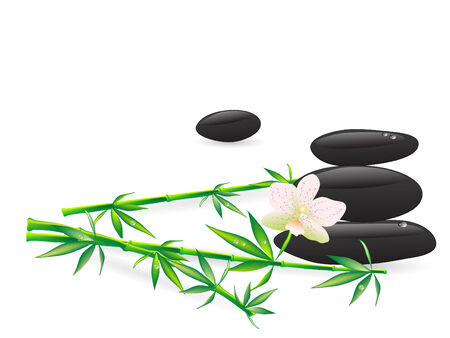Introduction to Qi and Flowing Energy in Garden Design
Across centuries and cultures, gardens have been cherished as sanctuaries of harmony, reflection, and rejuvenation. At the heart of many Eastern philosophies lies the concept of Qi (pronounced “chee”): a vital, flowing energy believed to animate all living things and environments. Rooted in ancient Chinese tradition, Qi is thought to move dynamically through landscapes, shaping both health and fortune. While the notion of invisible energies may seem far removed from the practicalities of British garden design, there exists a fascinating convergence between the two traditions. Historically, UK gardens—whether the formal symmetry of Georgian estates or the wild romanticism of Arts & Crafts landscapes—have sought balance, movement, and a sense of place. Today’s contemporary British gardeners are rediscovering these timeless principles, embracing water features not only for their beauty but also for their ability to foster an uplifting flow of energy. By exploring Qi within the context of UK garden design, we uncover how the interplay of water, form, and intention can create spaces that feel vibrantly alive, seamlessly blending Eastern insights with Britain’s rich horticultural heritage.
2. The Cultural Importance of Water in British Gardens
Water has always held a place of reverence within the tapestry of British garden design, weaving together tradition and innovation across centuries. From the tranquil ornamental lakes gracing the grounds of stately homes to the charming fish ponds nestled in cottage gardens, water features have long been cherished for their aesthetic and symbolic resonance. In classic British landscaping, these elements served not only as focal points for contemplation but also as practical resources, reflecting both beauty and utility. Today, contemporary interpretations see water features seamlessly integrated into urban spaces—think sleek rills running alongside patio paving or reflective pools enhancing minimalist courtyards—showcasing a dialogue between heritage and modernity.
Historical Perspectives: Water’s Role in Traditional Gardens
The grandeur of Britain’s historic estates is often accentuated by expansive water features such as lakes, canals, and fountains. These installations were carefully planned to mirror the natural landscape while demonstrating human ingenuity. For instance, the famed water terraces at Chatsworth House or the serene lily ponds of Sissinghurst Castle Garden illustrate how water was used to balance symmetry, invite wildlife, and create an air of tranquillity that elevated the experience of walking through these gardens.
Traditional vs Modern Water Features in British Gardens
| Aspect | Traditional Gardens | Modern Urban Spaces |
|---|---|---|
| Main Purpose | Aesthetic grandeur & ecological balance | Space optimisation & relaxation |
| Common Elements | Ponds, lakes, formal fountains | Water walls, rills, small reflective pools |
| Symbolism | Status, harmony with nature, spiritual reflection | Sustainability, wellness, innovative design |
| Integration with Landscape | Blended with natural contours and planting schemes | Geometric layouts; fits into compact areas |
The Enduring Significance of Water Features for Good Qi
This enduring relationship with water is not merely historical or visual—it is deeply connected to notions of wellbeing and positive energy flow. Whether echoing the calm ripples on a country estate’s pond or the gentle trickle in an urban courtyard, British gardens have consistently harnessed water as a source of serenity and vitality. As we reinterpret these traditions for contemporary living, incorporating water remains essential for inviting good Qi and creating spaces that feel balanced and alive.

3. Choosing the Right Water Feature for Your Space
Selecting the ideal water feature for your British garden involves more than simply picking a design that catches your eye; it’s about harmonising with the unique qualities of your outdoor space and ensuring that positive qi flows freely. Considerations such as scale, climate, and aesthetic compatibility are essential in creating a tranquil, balanced environment.
Scale and Proportion Matter
The first step is to assess the size of your garden. For smaller urban gardens or courtyards, compact fountains or wall-mounted water spouts can introduce movement and sound without overwhelming the space. Conversely, larger country gardens may accommodate expansive ponds or meandering rills, allowing for grander expressions of water and energy.
Adapting to the British Climate
Britain’s varied climate requires thoughtful selection of materials and features. Frost-resistant stone or ceramic is ideal for enduring chilly winters, while features designed for ease of cleaning will ensure longevity amid falling leaves and rain. Solar-powered pumps are increasingly popular, harnessing the UK’s growing sunlight hours in an eco-friendly manner.
Aesthetic Harmony with Local Character
Your chosen water feature should complement both your garden’s style and the surrounding landscape. Traditional English gardens might suit classic stone fountains or naturalistic streams lined with native plants. Contemporary spaces often benefit from minimalist rills or sleek reflective pools that echo modern lines while still fostering a sense of calm.
By carefully weighing these factors—scale, climate resilience, and harmony with your garden’s character—you can select a water feature that not only enhances visual appeal but also supports the gentle circulation of qi throughout your outdoor sanctuary.
4. Placement: Harnessing Good Qi and Landscape Flow
Proper placement of water features is essential in ensuring that the energy—or “Qi”—flows harmoniously throughout a UK garden. Integrating classic Feng Shui principles with British horticultural sensibilities can transform your outdoor space into a tranquil haven. Start by considering the orientation of your garden: traditionally, water should flow towards the house, symbolising wealth and positive energy moving into your life. However, the unique patterns of British sunlight, prevailing winds, and local topography should also guide your decisions.
Key Siting Guidelines
| Feng Shui Principle | UK Garden Interpretation |
|---|---|
| Water at Entrance (Welcoming Qi) | Position a small fountain or pond near the main approach to invite prosperity and create a calming first impression. |
| Avoid Direct Alignment | Do not place water features directly in line with doors or paths—use gentle curves to encourage meandering energy and soften garden lines. |
| Balance with Landscape | Blend water features with native plants like ferns, hostas, or foxgloves to maintain ecological harmony and reinforce the natural look cherished in British gardens. |
Top Tips for Effective Placement
- Select a spot that receives dappled sunlight; too much shade can cause algae growth, while excessive sun may dry up smaller features.
- If your garden slopes—as many UK plots do—place the feature at a midpoint to allow natural water movement without risking drainage issues.
- Avoid placing water behind seating areas, as this can symbolically “wash away” support and stability in life according to traditional beliefs.
Blending Tradition and Local Wisdom
The best results come from respecting both ancient knowledge and practical experience. Observe how rainwater moves through your garden after heavy showers—a common occurrence in Britain—and use this insight to site ponds or rills where they will naturally collect or channel excess moisture. By thoughtfully marrying these time-honoured principles with the realities of the UK climate and landscape, you can create a garden where energy flows seamlessly, bringing peace and vitality to all who enjoy it.
5. Materials and Style: Creating Cohesion with UK Landscapes
When designing water features that harmonise with the unique character of British gardens, material selection is as crucial as the placement or form. Using locally quarried stone not only supports regional heritage but also ensures your water feature blends seamlessly into the surrounding landscape. Classic York stone, Scottish granite, or Cotswold limestone can evoke a sense of timelessness and connection to place, enhancing both the visual appeal and the flow of positive qi.
For those seeking an eco-conscious approach, reclaimed bricks and salvaged architectural fragments introduce an authentic patina and narrative, grounding the water feature in British history while reducing environmental impact. These weathered materials work beautifully in cottage gardens or more formal settings, softening new installations and fostering a sense of continuity.
Modern British garden design often favours eco-friendly materials such as permeable concrete, recycled glass aggregates, or responsibly sourced timber. These options can be tailored to contemporary or minimalist gardens, reflecting clean lines and subtle textures without compromising on sustainability. Pairing these with native plantings further integrates the water feature into its environment and supports local biodiversity.
To achieve stylistic cohesion, consider referencing traditional elements—like brick-edged rills reminiscent of Georgian gardens or slate-lined ponds echoing Welsh landscapes—while adapting them for modern sensibilities. Thoughtful use of finishes and colours that mirror existing garden structures, such as house masonry or boundary walls, will help unify the entire space and invite a harmonious energy flow throughout your garden retreat.
6. Native Planting and Wildlife: Supporting Life with Water
Incorporating native plants around water features is a time-honoured way to enhance both biodiversity and the flow of good Qi in UK gardens. By choosing flora indigenous to Britain, you not only create a welcoming habitat for local wildlife—such as birds, bees, frogs, and dragonflies—but also ensure your garden evolves in harmony with its natural surroundings.
Encouraging Biodiversity Through Native Flora
Selecting native species like marsh marigold (Caltha palustris), purple loosestrife (Lythrum salicaria), and water forget-me-not (Myosotis scorpioides) ensures that your water feature supports pollinators and aquatic insects vital to a healthy ecosystem. These plants thrive in the UK’s climate and soil conditions, requiring less maintenance while providing year-round interest and movement.
Movement and Flow: Creating Dynamic Energy
The gentle sway of grasses such as Carex elata or the rippling leaves of yellow flag iris (Iris pseudacorus) echo the principles of Feng Shui by promoting dynamic yet harmonious energy. The rustle of reeds in the breeze or the flutter of butterflies over wildflowers adds vitality, reinforcing the sense of flowing Qi throughout your garden.
Sustaining Good Qi for Generations
By designing with native plants, you’re not merely supporting current wildlife; you’re investing in long-term ecological balance. A well-planted margin around ponds or rills acts as a natural filtration system, maintaining water clarity and purity—essential for positive energy circulation. Moreover, these verdant borders invite seasonal change, offering fresh sights and sounds that keep your garden alive with auspicious Qi all year round. Thoughtful planting thus transforms your water feature into a sanctuary where nature thrives and energy flows unimpeded.


